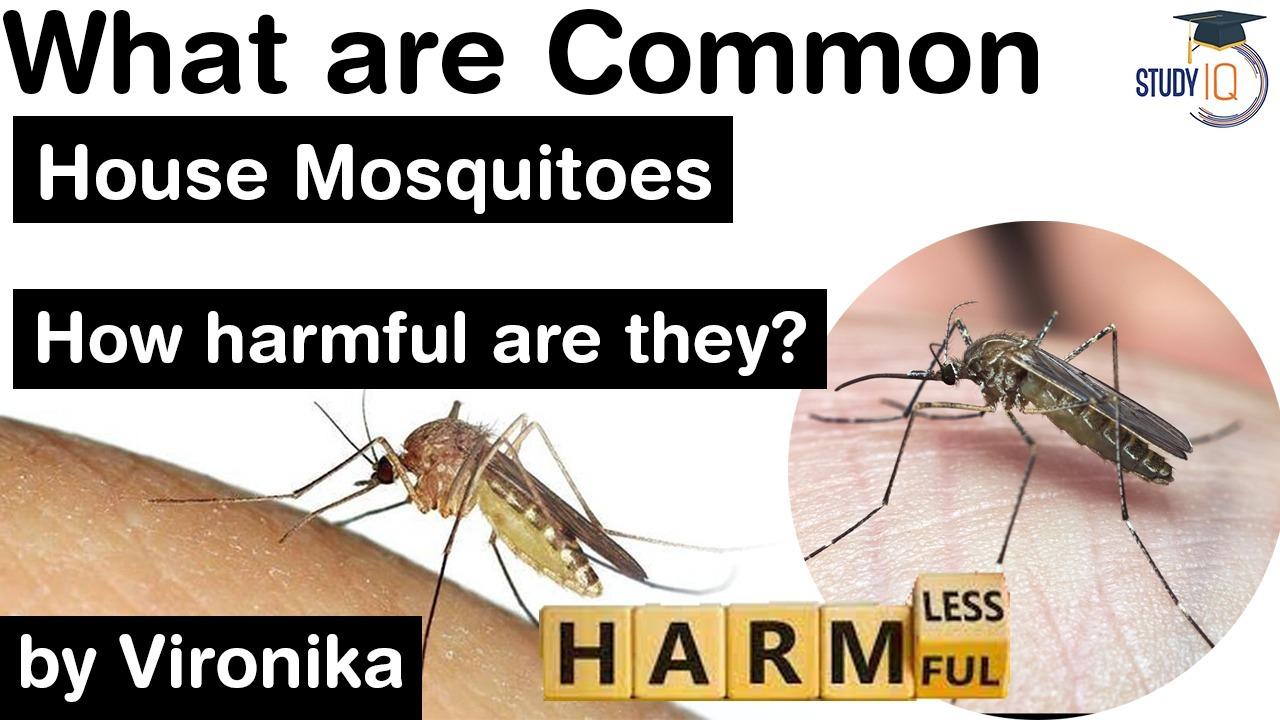Table of Contents
- With the change in season and rise in temperature, culex or common house mosquitoes have made a reappearance across the capital.
- Several resident welfare associations have complained that they are noticing an increase in the number of mosquitoes in their surrounding
- Warmer temperatures are the main reason for the appearance of these mosquitoes.
- Their presence is especially felt more in areas around floodplains in East and South Delhi as it is an ideal condition of breeding.
- Culex mosquitoes are known carriers of Japanese encephalitis, a potentially life-threatening but rare viral disease that causes “acute inflammation” of the brain. They breed in dirty, stagnant water.
- They can fly up to a distance of 1-1.5 km.
- Unlike Aedes aegypti mosquitoes, which spread dengue and chikungunya and breed in clean water, culex mosquitoes breed in unclean stagnant water
Vulnerable areas
- In the New Delhi Municipal Corporation (NDMC) area, the main hotspots for breeding of such mosquitoes are at the Kushak drain and at its border areas at Bapa Nagar and Bharti Nagar
- East Delhi is most affected by Yamuna flood plain, South by Barapullah drain and North by Najafgarh drain.
- The number of mosquitoes in areas along these drains is more.
Weather Contribution
- The water recedes in the summers, there are depressions in the flood plains where water still remains and doesn’t dry even in hot weather as the water table is high. Such areas are ideal breeding grounds for culex.
- Temperature for mosquito breeding is ideal at present
- The ideal condition for mosquitoes to breed is when the temperature is between 10 degrees Celsius and 40 degrees Celsius. This is the time to intensify the anti-mosquito drive
- Putting mosquito larvicidal oil-coated blocks in major drains, which create a layer on the surface. Long-acting insecticides are also being put, which paralyses mosquitoes.
- Culex mosquitoes tend to breed in dirty water, especially in storm water and other drains, during March-April each year.
- To combat this, this year, a new method is adopted — to put barrels containing anti-larval medicines inside the drains and did underground fogging.
- This does not affect people. Sprays and medicines are also being put inside the drains for the last three days as a preventive measure.
What is hitting the MCDs anti-mosquito operations
- The workforce for controlling the spread of mosquitoes engaged in tasks such as tax collection and house surveys, inspecting open defecation
- Domestic Breeding Checker (DBC)
- Past two months they have been engaged to monitor open defecation in the area, a house tax survey, and DDA’s door-to-door exercise in unauthorised colonies to encourage people to register their houses.
- There are around 3,500 DBCs employed in the three MCDs– North, South and East– whose efforts have contributed to the control of vector-borne diseases in the capital over the past few years.
- On a usual day, around 3,500 DBCs employed in the three MCDs visit 60-70 houses to check if coolers, overhead tanks and flower pots have stagnant water that could be breeding grounds for mosquitoes.
- Data also shows that the number of house visits by DBCs has declined — from 44 lakh in 2018, 45 lakh in 2019, 19 lakh in 2020 and 21 lakh this year (all figures from January 1 till the second week of March).
- The figures in 2020 dipped massively because of the pandemic. Most of the workforce was diverted to disinfect areas and perform other Covid-related duties last year.
Zika Virus
- Zika virus is a mosquito-borne flavivirus that was first identified in Uganda in 1947 in monkeys.
- It was later identified in humans in 1952 in Uganda and the United Republic of Tanzania. Outbreaks of Zika virus disease have been recorded in Africa, the Americas, Asia, and the Pacific.
- Zika virus disease is caused by a virus transmitted primarily by Aedes mosquitoes and can be passed from a pregnant woman to her foetus.
- There is no vaccine or medicine for Zika. Instead, the focus is on relieving symptoms and includes rest, rehydration and acetaminophen for fever and pain.
Dengue
- Dengue is transmitted by several species of mosquito within the genus Aedes.
- Symptoms include fever, headache, muscle, and joint pains, and a characteristic skin rash that is similar to measles.
- Dengvaxia is the first dengue vaccine but the Indian drug controller has yet to grant approval to it.
- India has reported 6,210 cases and six deaths from dengue until June 9, 2019.
Chikungunya
- Chikungunya is caused by a mosquito-borne virus.
- It is transmitted by Aedes aegypti and Aedes albopictus mosquitoes.
- Its symptoms are characterized by abrupt fever and severe joint pain, often in hands and feet, and may include headache, muscle pain, joint swelling or rash.
- There is no specific antiviral drug treatment for chikungunya.
- There is no commercial chikungunya vaccine.
Latest Burning Issues | Free PDF






















 WhatsApp
WhatsApp